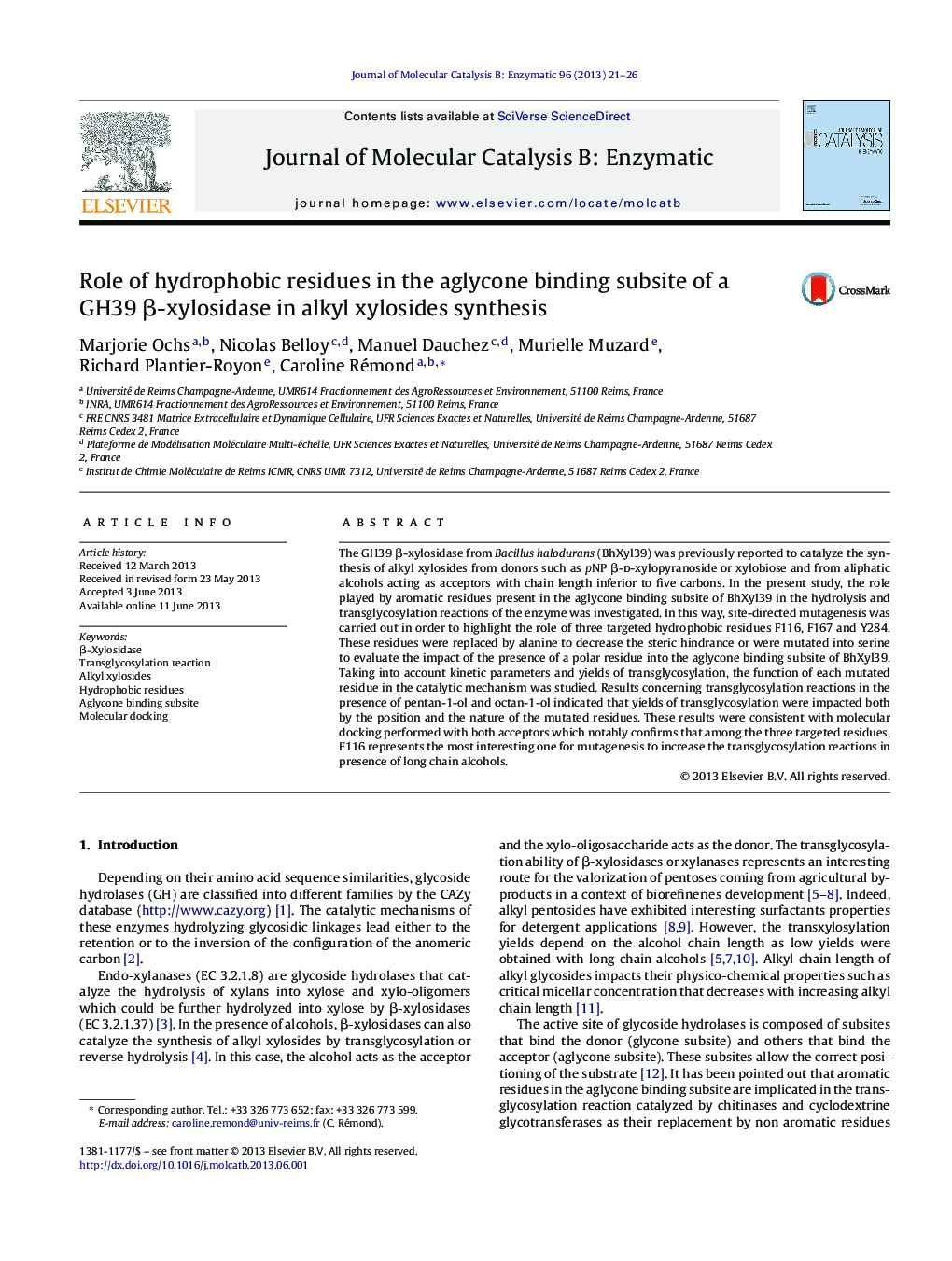| کد مقاله | کد نشریه | سال انتشار | مقاله انگلیسی | نسخه تمام متن |
|---|---|---|---|---|
| 69789 | 48793 | 2013 | 6 صفحه PDF | دانلود رایگان |

• Mutations of aromatic residues in the aglycone binding subsite of a β-xylosidase modify its hydrolytic and transglycosylation activities.
• F116, F167 and Y284 play an important role in hydrolysis of pNP β-d-Xylp.
• F116 represents an interesting target to enhance the transglycosylation reaction with octanol.
The GH39 β-xylosidase from Bacillus halodurans (BhXyl39) was previously reported to catalyze the synthesis of alkyl xylosides from donors such as pNP β-d-xylopyranoside or xylobiose and from aliphatic alcohols acting as acceptors with chain length inferior to five carbons. In the present study, the role played by aromatic residues present in the aglycone binding subsite of BhXyl39 in the hydrolysis and transglycosylation reactions of the enzyme was investigated. In this way, site-directed mutagenesis was carried out in order to highlight the role of three targeted hydrophobic residues F116, F167 and Y284. These residues were replaced by alanine to decrease the steric hindrance or were mutated into serine to evaluate the impact of the presence of a polar residue into the aglycone binding subsite of BhXyl39. Taking into account kinetic parameters and yields of transglycosylation, the function of each mutated residue in the catalytic mechanism was studied. Results concerning transglycosylation reactions in the presence of pentan-1-ol and octan-1-ol indicated that yields of transglycosylation were impacted both by the position and the nature of the mutated residues. These results were consistent with molecular docking performed with both acceptors which notably confirms that among the three targeted residues, F116 represents the most interesting one for mutagenesis to increase the transglycosylation reactions in presence of long chain alcohols.
Figure optionsDownload as PowerPoint slide
Journal: Journal of Molecular Catalysis B: Enzymatic - Volume 96, December 2013, Pages 21–26